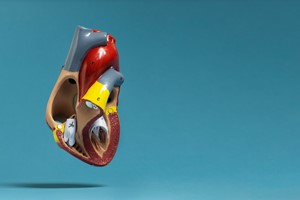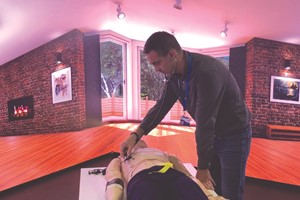In a groundbreaking leap forward for medical technology, a team of researchers has unveiled a wireless, ultrathin pacemaker that operates akin to a solar panel, as reported in the esteemed journal Nature. This revolutionary design not only obviates the need for traditional batteries but also promises to minimize disruptions to the heart's natural rhythm by seamlessly conforming to its contours.
Traditional pacemakers, those stalwarts of cardiac care, rely on electronic circuits powered by batteries and leads anchored to the heart muscle for stimulation. However, these leads pose risks of failure and tissue damage, while the rigid metallic electrodes of conventional pacemakers may exacerbate tissue damage during surgical procedures or arrhythmia regulation. Furthermore, their fixed positioning restricts access to various regions of the heart.
In response to these challenges, the collaborative efforts of researchers, led by the Tian lab and colleagues at the University of Chicago Pritzker School of Molecular Engineering, have yielded a leadless, flexible pacemaker that can precisely stimulate multiple areas of the heart. This pioneering device converts light into bioelectricity, utilizing an optic fiber and silicon membrane, each thinner than a human hair, which the team has meticulously developed over years of research.
Unlike conventional solar cells, engineered primarily to maximize energy collection, this innovative pacemaker selectively generates electricity only at points illuminated by light, thus offering precise regulation of heartbeats. The device achieves this precision through a layer of minuscule pores adept at trapping both light and electrical current, ensuring that only cardiac muscles exposed to these light-activated pores receive stimulation.
Notably, the diminutive size and weight of the pacemaker permit implantation without the need for chest incisions, a significant advancement in minimizing postoperative trauma and recovery time. Successful implantation and pacing of rodent and adult pig hearts, which anatomically resemble human hearts, underscore the device's potential for clinical translation.
The implications of this breakthrough are profound, particularly in the context of global cardiovascular health. With heart disease reigning as the foremost cause of mortality worldwide, innovations like this ultralight pacemaker offer a beacon of hope for millions. Its gentle conformity to the heart's surface enables less invasive stimulation, thereby enhancing pacing and synchronized contraction, while its minimally invasive implantation technique promises to further mitigate patient distress.
Yet, critical questions persist. While the technology shows promise for addressing urgent cardiac conditions such as heart attack recovery and defibrillation, long-term effects and durability within the human body remain areas of ongoing investigation. Concerns regarding the device's functionality in the fluid-rich internal environment, potential formation of scar tissue, and the body's response to extended implantation underscore the need for continued research and refinement.
Looking ahead, the research team remains steadfast in their commitment to advancing this technology. Efforts to optimize the device's dissolution rate for long-term implantation and exploration of wearable pacemaker capabilities, facilitated by integrating a wireless LED beneath the skin, are already underway. Beyond cardiac care, the team envisions a broader application of their innovation, spanning neurostimulation, neuroprostheses, and pain management for conditions like Parkinson's disease.
nature.com - Monolithic Silicon for High Spatiotemporal Translational Photostimulation













